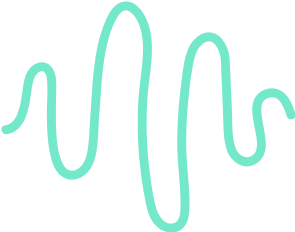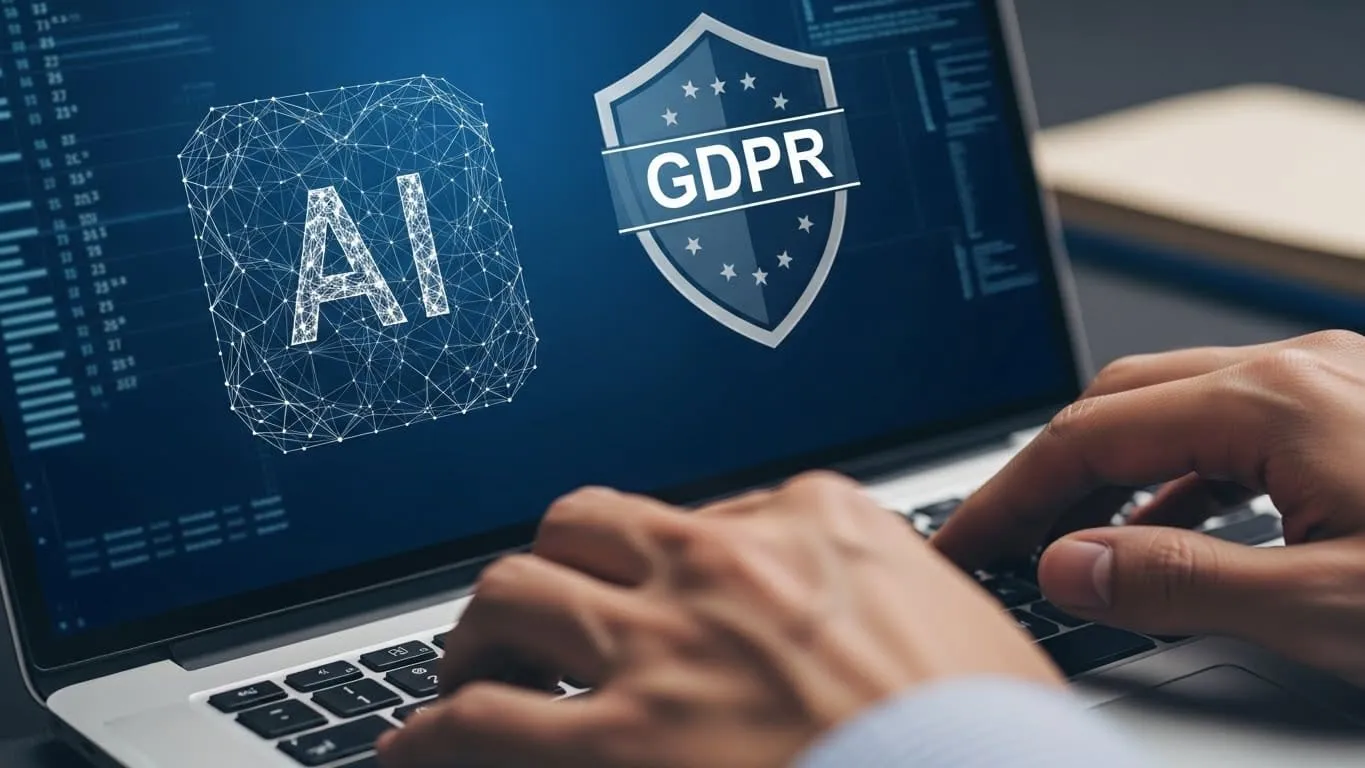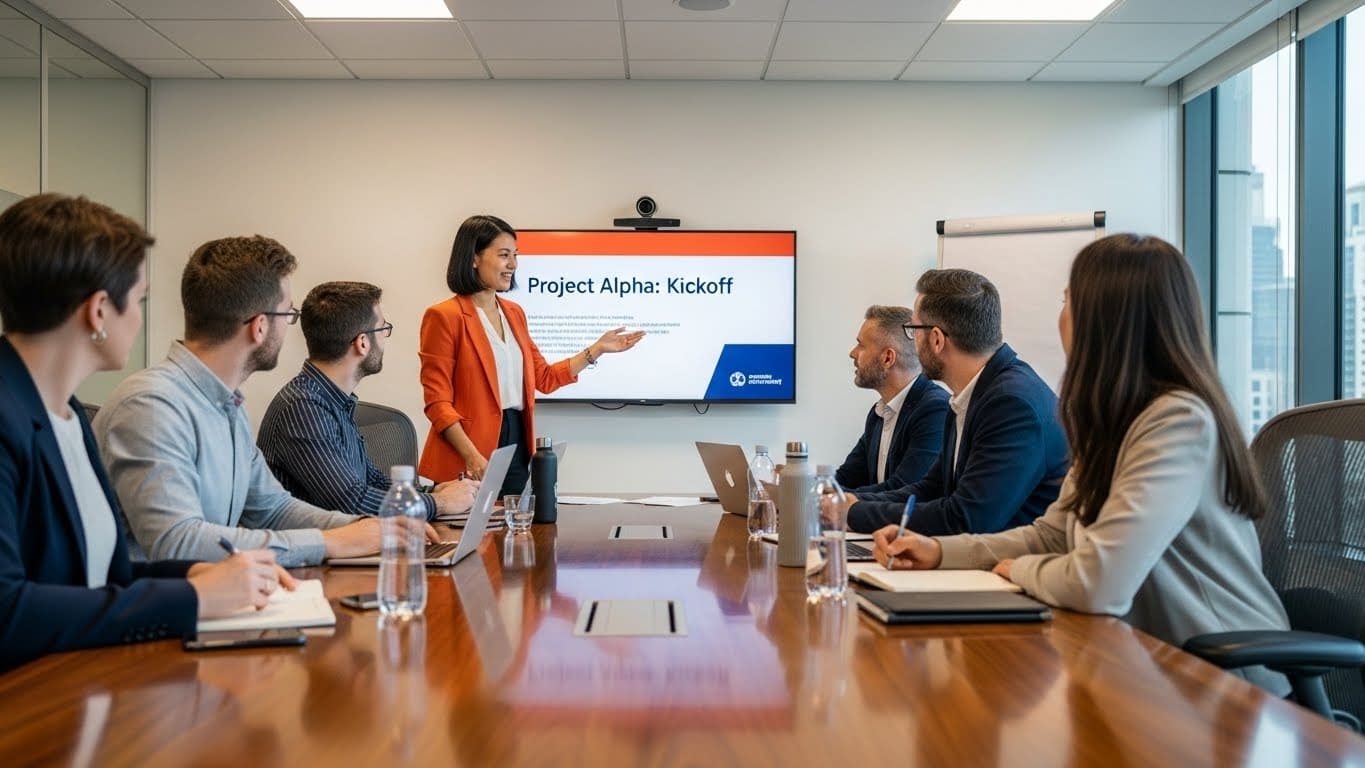Introductory Meeting : what it is and how to conduct it

Get the work done for any meeting
Meeting transcription, AI custom notes, CRM/ATS integration, and more
An introductory meeting is your first chance to set the tone for a successful working relationship.
The right approach can help you build trust and establish expectations among your business partners.
In this guide, you’ll learn everything you need to know about running an effective introductory meeting.
What is an Introductory Meeting?
An introductory meeting is a structured session where you align expectations and establish clear communication with business partners.
It’s where you and the participants set goals, understand each other's needs, and lay the groundwork for future interactions.
You might use this type of meeting to onboard new employees, start a project with a new client, or conduct a job interview.
Regardless of the context, the main goal is always to create clarity and build trust.
Examples of introductory meetings:
- When meeting a new client, you want to present your expertise while understanding their challenges.
- In an onboarding meeting, you help new team members get familiar with their colleagues, the team’s goals, and the company culture.
- In a pre-screening interview call, you get to know the candidate before doing a real interview.
What Subjects to Talk About in an Introductory Meeting

In an introductory meeting, the subjects you discuss will set the tone for future interactions. Here are the key topics you should cover to ensure a productive and effective meeting:
- Introductions and Roles: Start by introducing yourself and inviting others to do the same. Share your role and a brief background, and encourage participants to share their roles and responsibilities. This helps everyone understand who is involved and what they bring to the table.
- Purpose of the Meeting: Clearly state why you are having this meeting. Whether it’s to onboard a new team member, start a new project, or discuss collaboration with a client, make sure everyone knows the purpose.
- Goals and Expectations: Outline the goals you want to achieve during the meeting and what you expect from each participant. Be specific about what success looks like for this meeting.
- Background Information: Provide any relevant context that will help participants understand the current situation. For example, if you’re meeting a new client, share details about your company’s services and how they might address the client’s needs. If it’s an onboarding meeting, provide an overview of the team’s projects and objectives.
- Challenges and Opportunities: Discuss any challenges that need to be addressed and potential opportunities for collaboration. This is a good time to ask questions and listen to participants' concerns or ideas. Understanding the challenges early on will help you find solutions together.
- Communication Preferences: Talk about how you will communicate moving forward. Establish preferred communication channels, whether it’s email, chat, or regular check-ins.
- Next Steps and Action Items: Conclude the meeting by summarizing the key points discussed and outlining the next steps. Assign action items if needed, and make sure everyone knows their responsibilities. This keeps the momentum going and ensures that the meeting results in concrete actions.
Introductory Meeting Agenda Template

A well-structured agenda is key to making an introductory meeting productive and easy to manage. Below is a template you can personalize to fit your specific needs:
- Welcome and Introductions (5-10 minutes)
- Greet participants and introduce yourself.
- Ask each participant to introduce themselves, including their role and a brief background.
- Purpose of the Meeting (2-3 minutes)
- Clearly explain why you are having this meeting.
- Highlight what you hope to achieve by the end of the session.
- Background and Context (5-10 minutes)
- Provide relevant information or background that participants need to know.
- For client meetings, this could be an overview of your services and how they relate to the client’s needs.
- For onboarding, explain the team’s goals and current projects.
- Goals and Expectations (5-7 minutes)
- Outline specific goals for the meeting.
- Set clear expectations for each participant.
- Discussion of Challenges and Opportunities (10-15 minutes)
- Discuss any known challenges and brainstorm potential opportunities for collaboration.
- Encourage participants to share their thoughts, questions, and concerns.
- Communication Preferences (3-5 minutes)
- Discuss how everyone will communicate moving forward.
- Agree on preferred communication channels and frequency of check-ins.
- Q&A Session (5-7 minutes)
- Allow participants to ask any questions they may have.
- Address any concerns to ensure everyone is comfortable with the next steps.
- Summary of Next Steps and Action Items (5 minutes)
- Recap key points discussed during the meeting.
- Outline the next steps and assign action items, making sure everyone understands their responsibilities.
- Closing Remarks (2-3 minutes)
- Thank participants for their time and contributions.
- Express enthusiasm for future collaboration.
Tips to Conduct an Introductory Meeting Well

Conducting an introductory meeting effectively can set the stage for a positive and productive relationship. Here are some practical tips to ensure your meeting goes smoothly and achieves its goals:
Set a Positive Tone:
Start the meeting with a welcoming and friendly approach. Smile, introduce yourself, and make sure everyone feels comfortable. Creating a relaxed environment helps participants open up and engage in the discussion more effectively.
Keep It Focused:
Stick to the agenda and ensure each section has a specific time limit. Avoid getting sidetracked with unrelated discussions.
Clarify Expectations and Next Steps:
Be clear about what you expect from each participant during and after the meeting. Summarize key takeaways and outline the next steps before concluding the meeting. Make sure everyone knows their responsibilities moving forward, which helps maintain momentum and accountability.
Follow Up After the Meeting:
After the meeting, send a brief summary to all participants. Include key points, assigned action items, and deadlines. This follow-up ensures that everyone is on the same page and helps maintain progress on any tasks discussed during the meeting.
Introductory Meeting AI Notes: Noota

Taking effective meeting notes can be a challenging task, especially when you’re trying to engage fully in the conversation. Noota can help streamline your introductory meeting process :
- Automated Recording and Transcription: Forget about frantic note-taking. Noota records and transcribes your discussions in real-time, ensuring every word is captured accurately. This means you can focus on what’s being said without worrying about missing key details.
- Customizable Meeting Minutes: With Noota, you can create customized meeting minutes that reflect your specific needs. Whether you need detailed notes for a project kickoff or a summary for a client onboarding session, Noota lets you tailor your notes to suit the purpose of the meeting.
- Structured Summaries and Action Items: Noota helps you generate structured summaries of your meetings, highlighting key points, decisions, and action items. This ensures that everyone is clear on their responsibilities and knows what to do next.
- Effortless Sharing: Sharing meeting notes with your team has never been easier. With just a click, Noota allows you to distribute the minutes to all participants, ensuring everyone stays informed, even if they couldn’t attend the meeting.
- Integration with Other Tools: Noota can seamlessly integrate with your existing workflow tools, such as Slack or CRM platforms, making it easy to keep track of notes and action items across your projects.
Want to focus on building relationships without the distraction of manual note-taking? Try Noota for free.
Get the work done for any meeting
Meeting transcription, AI custom notes, CRM/ATS integration, and more
Related articles

Forget note-taking and
try Noota now
FAQ
In the first case, you can directly activate recording as soon as you join a videoconference.
In the second case, you can add a bot to your videoconference, which will record everything.
Noota also enables you to translate your files into over 30 languages.

.svg)
.svg)
.webp)

.png)


.svg)
